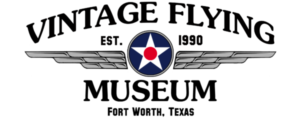The Douglas C-47 Skytrain or Dakota (RAF designation) is a military transport aircraft that was developed from the Douglas DC-3 airliner. It was used extensively by the Allies during World War II and remained in front line service with various military operators through the 1970’s.
The C-47 differed from the civilian DC-3 in numerous modifications that included being fitted with a cargo door and a strengthened floor.
During World War II, the armed forces of many countries used the C-47 and modified DC-3’s for the transport of troops, cargo, and wounded. The U.S. Naval designation was R4D. More than 10,000 aircraft were produced in Long Beach and Santa Monica, California and Oklahoma City, Oklahoma. The Oklahoma City plant produced 5,354 C-47s from March 1943 until August 1945.
The C-47 was vital to the success of many Allied campaigns, in particular those at Guadalcanal and in the jungles of New Guinea and Burma where the C-47 (and its naval version, the R4D) made it possible for Allied troops to counter the mobility of the light-traveling Japanese army. Additionally, C-47s were used to airlift supplies to the embattled American forces during the Battle of Bastogne. Possibly its most influential role in military aviation, however, was flying “The Hump” from India into China.
The expertise gained flying “The Hump” would later be used in the Berlin Airlift, in which the C-47 would play a major role, until being replaced by the C-54.
In Europe, the C-47 and a specialized paratroop variant, the C-53 Skytrooper, were used in vast numbers in the later stages of the war, particularly to tow gliders and drop paratroops. In the Pacific, with careful use of the island landing strips of the Pacific Ocean, C-47’s were even used for ferrying soldiers serving in the Pacific theater back to the United States.
Approximately 2,000 C-47’s in British and Commonwealth service took the name Dakota, from the acronym “DACoTA” for Douglas Aircraft Company Transport Aircraft. The C-47 also earned the informal nickname Gooney Bird in the European theater of operations.
Several C-47 variations were used in the Vietnam War by the United States Air Force, including three advanced electronic warfare variations, which sometimes were called “Electric Gooneys” designated EC-47N, EC-47P, or EC-47Qs depending on the engine used. EC-47s were also operated by the Vietnamese, Laotian and Cambodian Air Forces. A gunship variation, using three 7.62mm miniguns, designated AC-47 “Spooky” often nicknamed “Puff the Magic Dragon” also was deployed.
After World War II thousands of surplus C-47’s were converted to civil airline use, some remaining in operation in 2012 as well as being used as private aircraft.
This aircraft was ordered by TWA for passenger service with Wright Cyclone engines and was completed in December of 1941. Due to the attack on Pearl Harbor, many aircraft were pressed into military service and 6315 was no exception. It’s first job in service was as a troop carrier and paratroop trainer. Its official designation by the Army Air Corps was C-49J due being equipped with Wright engines in place of the standard Pratt and Whitney engines.
After the war, it changed hands many times. Immediately following the war, it was returned to its original purpose of passenger carriage. It was owned by Chicago and Southern Airlines until 1953 when the airline and all its planes were bought by Delta. It flew under Delta colors until it was sold to the President of Mexico. At this time the interior received a makeover to suit presidential status, including upgrades such as a wrap-around couch, a bathroom, complete galley, and the portrait windows. The engines were also updated at this time to the higher horsepower 1820-72 engines.
Following its presidential service, it was purchased by a skydiving operator who immediately ripped out all the interior upgrades in an effort to make the plane as light as possible and installed even larger engines, a pair of 1820-76Ds, (1475hp each) the same engines that are installed on the HU-46 Albatross.

